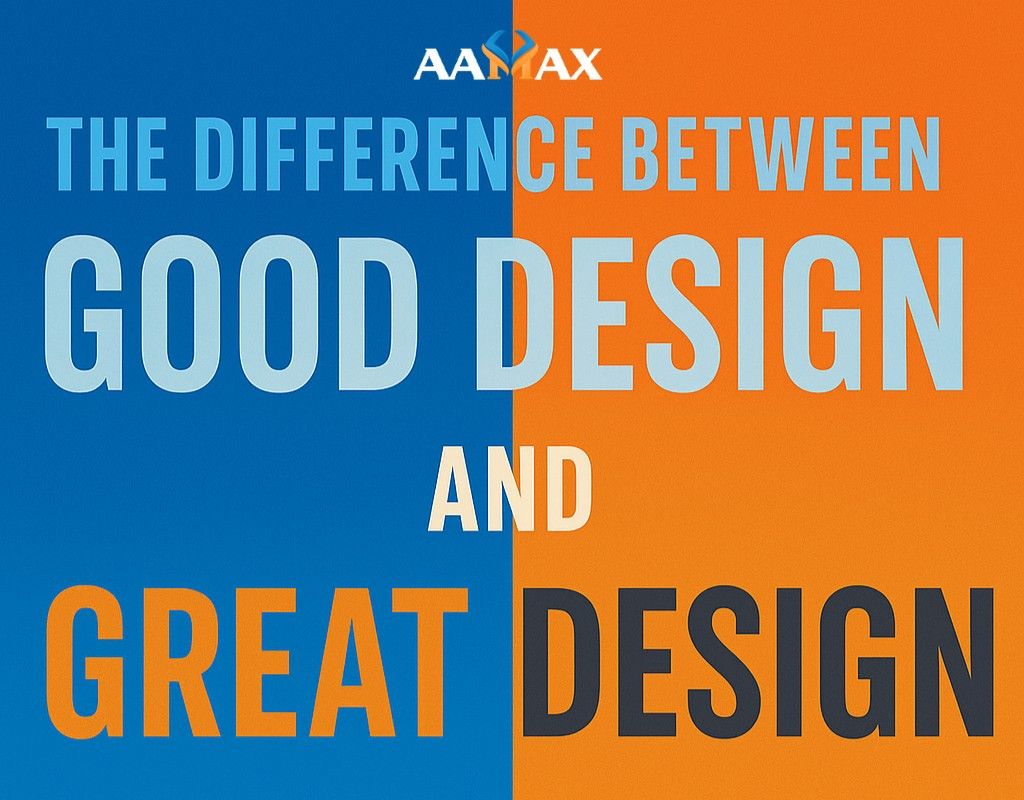
The Difference Between Good Design and Great Design
In today’s digital marketing and physical worlds, design is everywhere—from the websites we browse and the apps we use, to the packaging of products we purchase and the logos we recognize instantly. But there’s a huge difference between a design that is simply “good” and one that is truly “great.” While good design solves problems and functions well, great design inspires, resonates emotionally, and creates lasting value.
Understanding this difference is vital for businesses, creatives, and entrepreneurs who want to stand out in increasingly competitive markets. In this in-depth guide, we’ll explore what separates good design from great design, key principles that elevate work, and how companies can leverage design to drive growth.
Why Design Matters More Than Ever
Before diving into the nuances of good vs. great design, let’s reflect on why design itself is such a powerful force:
- First Impressions: Users form opinions about a product or service in seconds, often based on design alone.
- User Experience: Design influences how easily people interact with digital interfaces, physical spaces, or products.
- Brand Identity: Logos, colors, and layouts shape how a brand is perceived in the market.
- Emotional Connection: Great design goes beyond functionality—it tells a story and builds relationships with users.
In a crowded landscape, businesses that prioritize great design gain an undeniable competitive edge.
What is Good Design?
Good design meets expectations. It solves a problem, is aesthetically pleasing, and works as intended. A good website loads quickly, displays clear information, and has intuitive navigation. A good product is reliable, functional, and safe.
Characteristics of good design include:
- Functionality: It does what it’s supposed to do without issues.
- Clarity: Information is easy to understand, and the design avoids confusion.
- Consistency: Design elements such as fonts, colors, and layouts remain uniform.
- Usability: Users can easily interact with the design without a learning curve.
Good design doesn’t fail—but it also doesn’t necessarily surprise or inspire.
Examples of Good Design
- A chair that is sturdy, comfortable, and reasonably attractive.
- A website with clear navigation and responsive layouts.
- A smartphone app that performs its core function without glitches.
Good design is practical and efficient. It checks all the boxes but doesn’t necessarily linger in a user’s memory.
What is Great Design?
Great design transcends utility and aesthetics. It creates impact, sparks emotion, and resonates with its audience on a deeper level. While good design focuses on meeting expectations, great design exceeds them.
Characteristics of great design include:
- Innovation: It introduces new ideas or approaches that set it apart.
- Emotional Connection: Users feel something when engaging with the design—joy, trust, admiration, or even nostalgia.
- Memorability: The design stands out and becomes recognizable instantly.
- Timelessness: Great design doesn’t fade with trends; it endures over time.
- Delight: It surprises users with small but meaningful details that elevate the experience.
Examples of Great Design
- The Apple iPhone: Beyond functionality, it redefined how users engage with technology.
- The London Underground map: A design that is simple, iconic, and user-friendly.
- The Coca-Cola logo: Timeless, emotional, and universally recognized.
Great design isn’t just about appearance or usability—it’s about creating something that matters.
Key Differences Between Good and Great Design
Here’s a side-by-side breakdown of what separates the two:
In short: Good design works. Great design works and inspires.
The Psychology Behind Great Design
Great design leverages principles of human psychology. People are not purely rational decision-makers—emotions and perceptions heavily influence their choices. That’s why design that appeals to the subconscious can be so powerful.
Some psychological principles in great design:
- Gestalt Principles: Humans naturally perceive patterns, balance, and order.
- Color Psychology: Colors trigger emotions—blue builds trust, red creates urgency, green conveys growth.
- Cognitive Ease: The simpler a design is to process, the more appealing it feels.
- Storytelling: People connect with narratives, and great design often tells a brand’s story visually.
Understanding these principles allows designers to create experiences that go beyond usability and into the realm of influence.
How Businesses Benefit from Great Design
For businesses, design is not just an aesthetic choice—it’s a strategic investment. Great design can:
- Boost Conversion Rates: A well-designed landing page can significantly increase sales or sign-ups.
- Enhance Brand Perception: Premium design elevates a brand’s status in the market.
- Increase Customer Loyalty: Memorable, positive experiences encourage repeat business.
- Differentiate from Competitors: In saturated markets, design can be the deciding factor.
When design is treated as a core business function rather than an afterthought, it directly drives revenue and growth.
Principles That Elevate Design from Good to Great
So, how do you move from good design to great design? Here are some guiding principles:
-
Empathy for the User
Great design starts with understanding your audience’s needs, challenges, and emotions. Designers who empathize can create solutions that truly resonate. -
Attention to Detail
The smallest elements—micro-animations, button placement, or typography choices—make the difference between ordinary and extraordinary. -
Innovation and Boldness
Don’t just follow trends. Push boundaries and experiment with new approaches. -
Consistency with Flexibility
Maintain visual consistency while allowing room for creative expression that adds character. -
Timelessness Over Trendiness
Good design may ride the latest trends, but great design outlasts them. Aim for timeless appeal.
Great Design in Digital Spaces
In the digital era, the gap between good and great design is especially visible online. For example:
- Good Website: Fast loading, responsive, with clear navigation.
- Great Website: All of the above plus stunning visuals, intuitive UX, engaging content, and emotional impact.
Similarly, with mobile apps:
- Good App: Works without errors and performs basic functions.
- Great App: Engages users through seamless interactions, personalized features, and a design that feels almost invisible because it’s so intuitive.
This distinction is why companies that invest in digital design excellence consistently outperform competitors.
Why Professional Help Matters
While it’s possible to create “good” design with basic tools and templates, achieving “great” design usually requires professional expertise. Skilled designers and marketers know how to combine aesthetics, functionality, psychology, and brand strategy into one cohesive package.
That’s why many businesses turn to agencies like AAMAX, a full-service digital marketing company offering web development, SEO, and digital marketing services. With professional support, businesses can move beyond functional design and craft digital experiences that delight, inspire, and convert.
Common Mistakes That Hold Back Design
Many businesses get stuck at the “good design” level because of common pitfalls:
- Prioritizing looks over usability: A beautiful design that’s hard to use fails.
- Ignoring the target audience: Designing without user research leads to mismatches.
- Overcomplicating design: Cluttered layouts overwhelm instead of guiding.
- Neglecting consistency: Inconsistent fonts, colors, or layouts dilute brand identity.
Avoiding these mistakes opens the door to greatness.
The Future of Great Design
Design continues to evolve. The next wave of great design will likely be shaped by:
- AI-Driven Personalization: Experiences tailored to each individual.
- Sustainability: Eco-friendly and socially responsible design choices.
- Accessibility: Inclusive design that ensures usability for people of all abilities.
- Immersive Technologies: AR, VR, and 3D experiences that redefine interaction.
Businesses that embrace these trends will be well-positioned to create future-proof designs that remain impactful.
Final Thoughts
The difference between good design and great design is subtle yet profound. Good design works. Great design works and leaves a mark. It goes beyond solving problems to create memorable, emotional, and lasting experiences that drive brand loyalty and business growth.
For businesses, the key is not just to aim for good design but to strive for greatness. That often means investing in expertise, paying attention to the smallest details, and keeping the user at the center of the creative process.
In today’s fast-moving, competitive market, great design is no longer optional—it’s essential. By embracing it, businesses can build stronger identities, engage audiences more deeply, and achieve sustainable growth.







